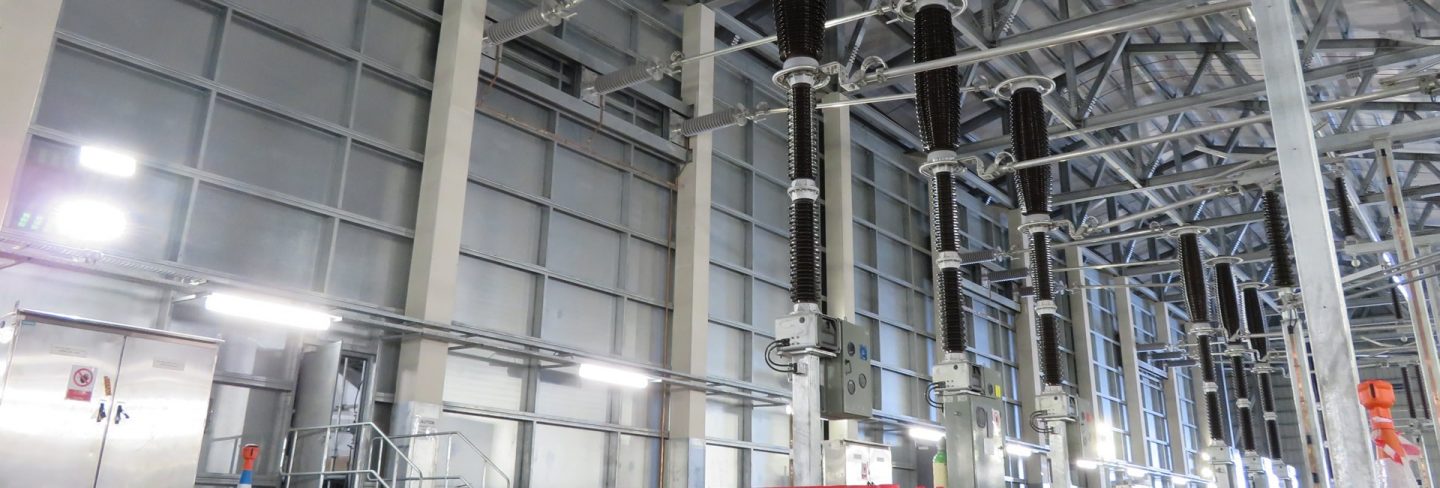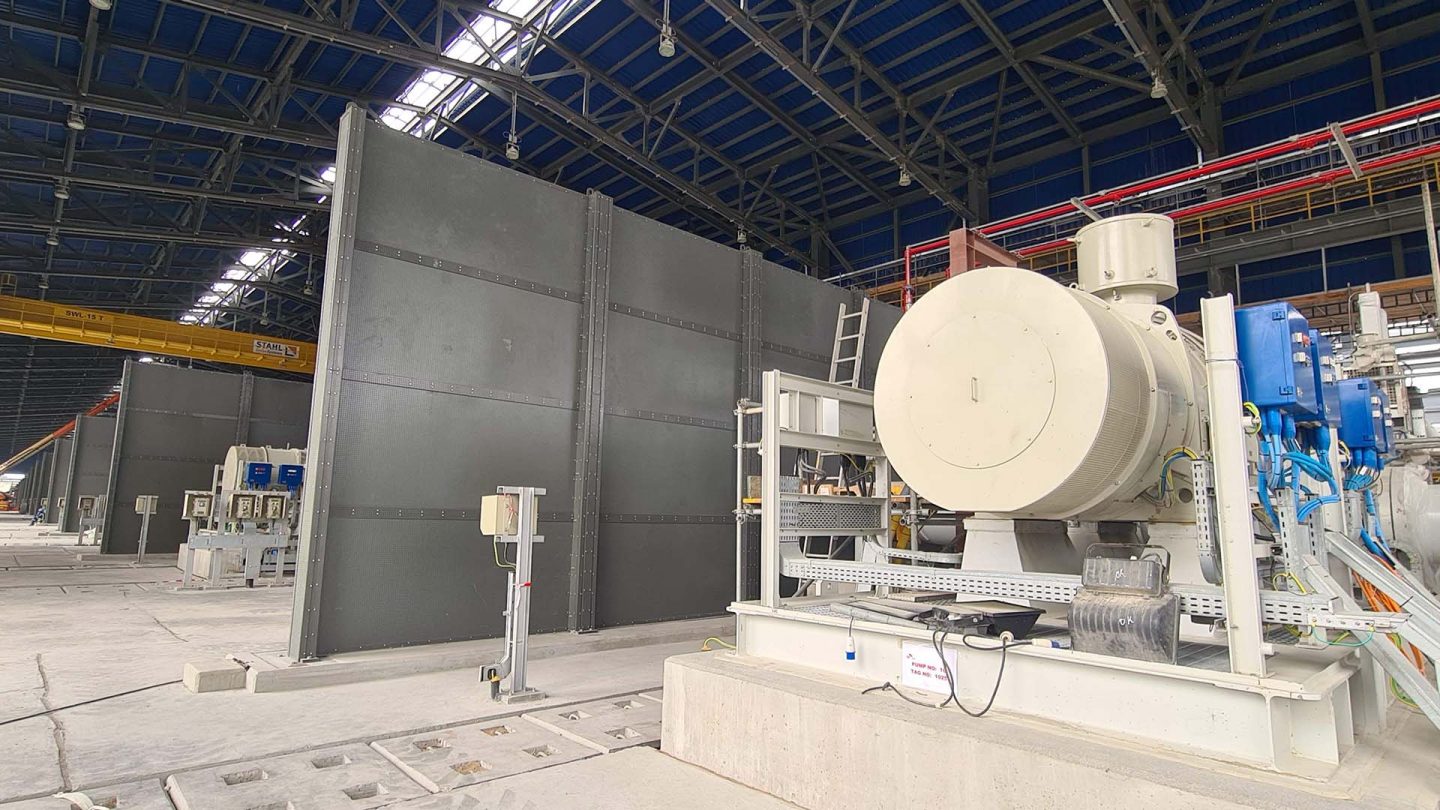For your information
You are being redirected to one of our divisional subsites which contains more detailed information on the required division. To navigate back to the main Invicta Group site, please click the link found in the footer at the bottom of the page.
- Durasteel
Discover the benefits of Durasteel
- Systems
Systems
- Expertise
Expertise
-
Applications
- Aircraft Hangar Fire Protection
- Battery Storage Facilities
- Building Fire Compartmentation
- Anti-Terrorist Blast Protection
- Cable Tunnel Fire Compartmentation
- Equipment Delivery Hatches
- Equipment Enclosures
- Heat Shields
- Power Station Fire Protection
- Metro and Rail Fire Protection
- High Voltage Cable Protection
- Substation Fire & Blast Protection
- Tunnel Fire Protection
- Oil & Gas Fire & Blast Protection
- Ventilation Systems
- Wind Farm Fire Protection
-
Applications
- Projects
- Insights
Insights
-
Articles
- The benefits of passive fire protection for businesses
- What BS 9991 changes mean for building fire safety
- Does the rise in electric vehicle fires pose a risk to buildings?
- What Boeing’s downfall says about safety culture
- Does AI pose a threat to fire safety?
- What we can learn from the Grenfell report
- Frequently Asked Questions
- A to Z of Terms
-
Articles
- Contact
Contact

UK +44 1843 220 256

US +1 305 328 9444

UAE +971 4 277 6225

Qatar +974 4441 4340

India +91 79945 14049

Malaysia +60 16 286 6225
- Start your project
Is the London Underground e-bike ban really necessary?
12th October 2025
Quick Quote
Contact Fraser Shearer Sarun Vysakham Ben Tan Anand Raghavan Anand Raghavan Our USA Office
To get a quotation or arrange a free site survey - Call Fraser Shearer Sarun Vysakham Ben Tan Anand Raghavan Anand Raghavan Our USA Office on
-
 UK
UK
-
 UAE
UAE
-
 Malaysia
Malaysia
-
 India
India
-
 Qatar
Qatar
-
 USA
USA
Current location:
Quick Quote
Contact Fraser Shearer Sarun Vysakham Ben Tan Anand Raghavan Anand Raghavan Our USA Office
-
 UK
UK
-
 UAE
UAE
-
 Malaysia
Malaysia
-
 India
India
-
 Qatar
Qatar
-
 USA
USA
Current location:
After a chorus of calls to ban e-bikes on the London Underground, Transport for London (TfL) finally opted to take action, and have forbidden the use of non-folding e-bikes on the city’s famous metro. This comes on the back of a more contentious fire safety decision, which was the London Fire Brigade’s call to remove book lending carts from outside of a number of station entrances.
Despite this, the move has prompted a degree of backlash along the usual lines of ‘health and safety gone mad’. But the ban on e-bikes is just the latest in a line of measures against a growing threat to safety. While there may be alternatives to a total ban, none currently seem viable—making the measure a necessary one to keep riders safe.
Which e-bikes are banned from the Tube?
Transport for London have now instituted new rules for e-bikes on the Tube following widespread pressure. Non-folding e-bikes are now banned at all times, regardless of the route or time of day. However, folding e-bikes are still allowed to be taken on the London Underground. TfL have stated that folding e-bikes are permitted because these are less likely to have been modified than non-folding e-bikes, and thus carry less of a safety risk.
Regular bikes were already not allowed on the Underground between certain hours, and on certain lines. Folding bikes are allowed on all services at all times, although can be disallowed on buses at the driver’s discretion. Non-folding bikes are not allowed on a number of lines during peak times—i.e. the morning and evening rush hours—and in some cases are only allowed between certain stations, such as those that sit above ground.
At other times, it’s more a case of ‘user beware’ than anything else—they do not significantly impede other people apart from using slightly more space. This was the same story with e-bikes, with folding e-bikes being allowed at all times, and regular e-bikes only being permitted at certain times. Since an e-bike caught fire on a station platform in February 2025, however, calls had been growing to ban e-bikes from the Tube entirely—something TfL have now partly realised.
The problem with e-bikes and train stations
It’s generally been in the city’s interest to encourage and support bike riders as much as possible, as they contribute to fewer vehicles on the road, and thus less congestion and pollution. Both of these have been key areas of focus for current mayor Sadiq Khan, as epitomised by his ULEZ policy. But what about e-bikes? In theory, e-bikes offer a ‘best of both worlds’ solution. They provide fast and efficient transport without the pollution of most road vehicles.
The key differential is the fact that they’re powered, and thus require large batteries—something that inevitably poses a fire risk. We’ve discussed the fire risks associated with lithium ion batteries before.The main risk is something known as thermal runaway, where a chain reaction causes a battery to get hotter and hotter until it combusts. This is normally the result of damage, but can also be down to manufacturing defects or other issues. It poses an obvious and grave risk for underground or metro stations, as we illustrated in our video on metro fire protection.
A metro fire poses several issues. One is the limited escape routes: there are often relatively few staircases, which may be somewhat narrow or steep, particularly in the case of the centuries-old London Underground. The depth of these stations also means that it can take some time to reach the surface from platform level. In a fire, there’s also the issue that smoke rises—posing a severe risk to everyone ascending those staircases, and potentially obscuring escape routes.
Are e-bike fires really a problem?
So, to what extent are exploding e-bikes actually a problem? Unfortunately, battery fires from e-bikes are relatively common, and have led to a significant number of house fires. While no battery is completely safe from malfunctioning, there is relatively little regulation around the sale of e-bikes, with hundreds of options from different manufacturers available on marketplaces such as Amazon and eBay.
While these should meet UK or EU safety standards to be able to sell into these areas, not all sellers or marketplaces are equally scrupulous about checking this. Avenues also exist to buy the bikes directly from manufacturers in China or elsewhere, often for attractively low prices. There is also the issue of modifying bikes to turn them into e-bikes, using what are known as electric bike conversion kits. These kits may also not be from reputable sellers, and the DIY nature of their installation can mean they are damaged or not installed properly, increasing the risk of a malfunction and fire.
So what protection do Underground stations have from fires? Smoke extraction systems such as OTE ducts are a common way to extract smoke and keep escape routes clear in underground stations. Fire barriers, doors, and shutters at key points can also help to slow the spread of fire, while materials throughout metro stations will be as fire resistant as possible. Natural breaks such as long tiled corridors also help to limit the direct spread of fire. There may also be sprinkler or mist systems to fight fires, although installing such infrastructure in the ancient London tube system can be tricky.
The danger of station fires
Nevertheless, station fires are a potentially catastrophic issue. We only have to look at the King’s Cross fire for a relevant and potent example. While wooden escalators are no longer an issue, the fire demonstrates the logistical difficulties posed by an emergency underground. This is reflected in other disasters like the 7/7 bombings or Tokyo sarin attacks, where confusion can quickly take hold, and inhibit the response to an issue.
In the latter example, affected trains continued running for up to an hour in some cases due to the differing concentrations of sarin that were released, leading to differences in the effects experienced by passengers. This prevented the problem from being immediately identified and coordinated action being taken to shut down the network, and identify the packages. In the case of an uncontrolled fire at platform level, this could realistically see trains pulling into a station on fire, potentially putting the occupants at risk, and even spreading the fire further.
In a fully functioning system, this shouldn’t be able to happen. But redundancy is a critical part of fire safety. It’s important for there to be backup systems not just in case some systems fail, but also in case something unpredicted or unforeseen happens. In the case of the King’s Cross fire, the ‘flashover’ caused by the escalator tunnel was a previously unknown phenomenon, but the fire could have been extinguished early on if staff had been trained to use the available water fog extinguishing equipment.
Improving station fire safety
While Tube stations have measures in place to protect against fires and conduct swift evacuations, every effort has to be made to reduce the potential for fires. As much as every person’s phone and other personal devices pose a fire risk, e-bikes elevate this risk. The larger batteries, variable quality of bikes, and potential for improper modification of bikes all increase the risk beyond the kind of rare defects or damage you might see in a phone.
Nevertheless, even this ban isn’t foolproof. Banning full-sized e-bikes is an unfortunate but necessary step given the elevated risk factor, but battery fires will always be a risk so long as people carry battery-powered devices. And as low as the incidence rate of explosions and fires is among properly manufactured consumer devices like phones, there are also plenty of cheap phones with lower manufacturing standards, as well as devices like vape pens which aren’t explicitly banned, and have raised equal questions around their safety.
The only way to stop the risk conclusively will either be a total ban on devices with lithium-ion batteries (almost impossible) or the phasing out of lithium-ion batteries, neither of which is happening any time soon. Until then, the focus needs to be on improving station fire safety. One option may be extending passive fire protection to more areas of the Underground. An aspect which could be considered is the platform barriers that have popped up in some stations. Integrating fire protection into these could stop a major platform or train fire from spreading from one to the other.
Another aspect to consider is active fire protection. Ventilation has been a point of contention on the Underground for some time, with suggestions of poor air quality in the ancient tunnels. While obviously a massive undertaking, improvements to HVAC systems could include comprehensive smoke extraction. There’s also the question of sprinkler systems and the provision of easily accessible fire extinguishers, which can be lacking in public spaces due to space constraints and vandalism concerns. Relying on station staff could potentially impede response times in light of reductions in staff numbers at TfL.
–
There always has to be some accommodation for an aspect of fire safety not working as intended, with redundant systems there to pick up the slack. In the case of the London Underground, removing the most dangerous e-bikes is a sensible precaution. But it’s also a reminder that many of the devices we carry around everyday provide a fire risk that could never have been foreseen when much of the Tube was created.
Modern battery-powered devices are worth considering in all aspects of fire safety, however small the risk might be. In the same way that electric cars bring new fire safety considerations, so do the other devices we use everyday—the scope of which can rival the biggest battery storage rooms.
Accreditations & Affiliations











SpecUp - System Specification Wizard
Answer the 5 short questions below to receive your recommended Durasteel system specifications. Hover over the ? icons for a brief explanation.
Question 1/5
Type of system required?
Question 2/5
Fire rating required?
Question 3/5
Fire integrity-only or integrity and insulation?
Question 4/5
Fire attack risk from one side or both sides of the system?
Question 5/5
Blast rating required in addition to fire rating?
Creating your results page
Thanks for completing the SpecUp, you’ll be redirected to your results shortly.
Click here if you aren't redirected after a few secondsStart your project
Tell us about your project. Please complete this form. One of our sales team will come back to you with more details. If you prefer, you can drop us an email.




Share/Like this page